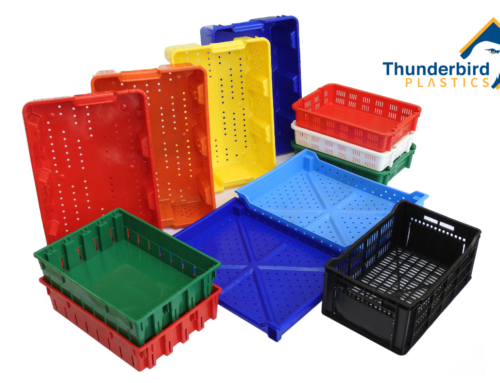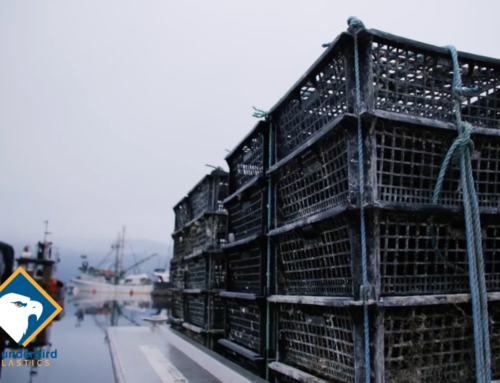Balancing Cost and Efficiency of Labour and Tools
Like all modern industries, the construction sector is not immune to the pressures of optimizing output, accuracy, and expenditures. A construction firm’s success hinges on the delicate balance of profit and expenditure. As such, the cost of tools, labour, and supplies must exist at the intersection between quality and cost. Building firms often make projections for these crucial figures. With sufficient data points, their profitability projections can be quite accurate. There is an understanding that, in certain circumstances, greater upfront costs for quality labour and supplies can lead to a greater net gain. Saving on tools and labour can make budgetary sense in the short term but may lead to inefficiencies and costs down the line. One tool that plays a vital role while providing the above-mentioned upfront cost with long-term benefits, is the canning sleeve. Sometimes called a pipe sleeve, conduit sleeve, or concrete sleeve, this tool is designed to create a neat workspace for building professionals.
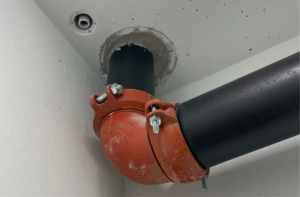
A channel for the water pipe was made by a canning sleeve while the concrete was setting.
What is a Canning Sleeve in Construction?
Canning sleeves are plastic conduits designed to create a passage for cables, pipes, or wiring through a material such as a concrete wall or panel. An understated yet indispensable component in construction, canning sleeves are convenient and time-saving. This is especially true when considering that, in their absence, construction workers need to drill holes into tough materials – using up limited time and resources on a job site. This time-consuming action introduces an unnecessary safety risk and may introduce inaccuracies due to human error. The canning sleeves at Thunderbird Plastics are designed with construction professionals in mind and answer to the desire to optimize operations.
Made from premium High-Density Polyethylene (HDPE) and offered in 17 different sizes, the team at Thunderbird has yet to leave anything to be desired in this design.
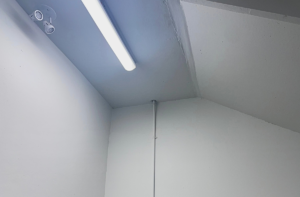
An electrical cable has room to travel through concrete because a canning sleeve was used while the concrete was setting.
History of Canning Sleeves and Modern Building Technology
It is speculated by some that this technology emerged alongside modern building methods and standards. In developed nations where a governing body may oversee an industry by dictating rules and standards of operation, there is a firm expectation of uniformity and it is drafted into the blueprint of the build. Rudimentary and approximated methods in historical building applications gave way to modern construction standards, highlighting the importance of the standardized sizing of canning sleeves of today. With the advent of modern building standards, the pipe sleeve is an extremely common product in the construction, plumbing, and electrical industries because it allows for uniformity across a building project with very little effort from the labour force.
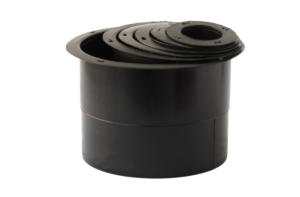
Our canning sleeves come in 17 different sizes.
Why Choose Thunderbird Plastic’s Canning Sleeves
Among the many benefits of using a standardized spacing conduit for such projects, the ease of removal is a key feature. At Thunderbird Plastics, canning sleeves are specifically designed with a material that will not stick to concrete or any other surface, while also providing the durability expected from all of our products. This material is HDPE which is specifically selected due to its smooth surface that will not adhere to concrete while also maintaining the durability to maintain its structure while screws and nails penetrate its surface. The chemical composition of HDPE does not promote strong adhesion to concrete because it has a low affinity for forming bonds with other strong materials. Furthermore, HDPE is resistant to moisture which prevents it from adhering to a damp surface like moist concrete. Once the concrete has set, rest assured that the removal of Thunderbird Plastic’s canning sleeve will be quick and neat saving time and energy for hourly labourers.
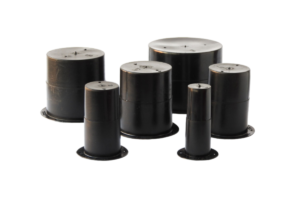
Thunderbird’s canning sleeves are made from in-house recycled HDPE.
Sustainability at the Core
The minds here at Thunderbird Plastics continue to demonstrate a commitment to environmental sustainability. As with all Thunderbird products, our canning sleeves are 100% recyclable – by us. Most importantly, these canning sleeves are also made from at least 95% in-house recycled plastic. Demonstrating a holistic approach to protecting our environment, we integrate sustainability into our product design and manufacturing processes, and through our in-house recycling program. Every product made by Thunderbird Plastics can be returned to us at the end of its useful life where it will be used to make new products. We at Thunderbird Plastics have always gone above and beyond what is the norm for the industry – taking care of the global community while delivering high-quality products to our customers.




